FUTURE PLATES
Adzuki, Wakame, Ube and Maitake: Charting a new way to eat
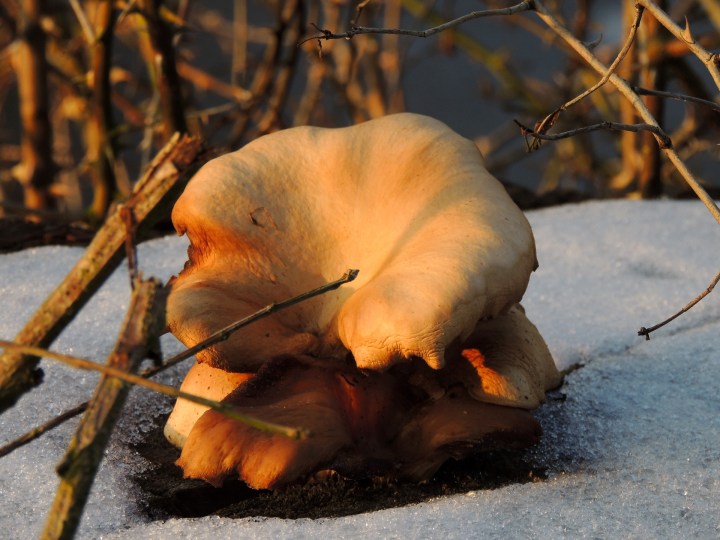
What will we be eating in future? How do we source ‘new’ foods (in fact, they’re mostly ancient) for a better future diet, and how do we know which unfamiliar foods we can trust and which might poison or kill us? A report by Knorr and WWF-UK lifts the lid on a world of unfamiliar ingredients and their flavours.
Future 50 Foods (50 foods for healthier people and a healthier planet) is a report, first published in February 2019, between the Knorr brand and WFF-UK to “shift” the food system by “using our purchasing power to increase the demand for and supply of foods that are better for people and the planet. Start by choosing to eat a wider range of foods, including the Future 50 Foods. Large-scale change begins with small actions.” That’s the aim, and the claim.
We revisit the list alongside a new report published this week which relates to this earlier report. Here’s a summing up of the full list, a few of which are very familiar, but many of which are little known:
Algae
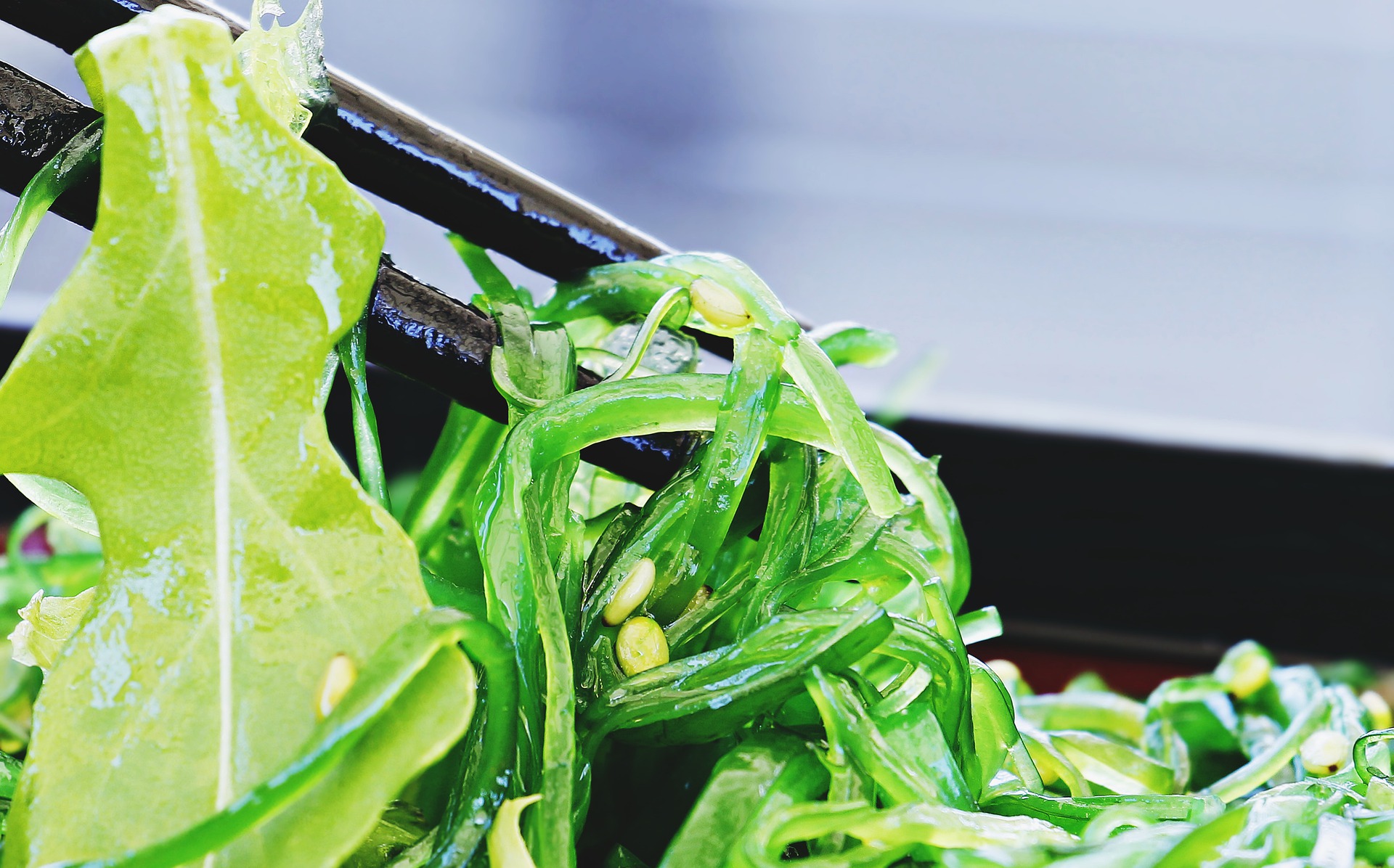
Image of a wakame seaweed dish by S. Hermann & F. Richter from Pixabay
“A meat-like umami flavour, making them a potential replacement for meat”. Two types are listed as good for cooking:
- Laver seaweed (nori, to those who know their Japanese cuisine). Described as “red algae known for its link to Japanese cuisine. Called ‘nori’ in Japan and most commonly used for wrapping sushi, laver is heralded for its exceptional nutrient content and ability to bring out the umami flavour in foods”.
- Wakame seaweed. Cultivated by sea farmers in Korea and Japan, and “most commonly sold dried and then rehydrated, wakame has a savoury flavour and satin-like texture. It can be chopped and added to soups or fried and thrown into salads, stir-fries, and side dishes for a salty, umami flavour”.
Beans and pulses
“More than environmental superheroes, beans offer us a rich source of fibre, protein and B vitamins. They are eaten in many dishes all over the world and have a mild flavour and meat-like texture, making them a sensible swap for meat in stews, soups and sauces.” They list nine types of beans:
- Adzuki beans. “Adzuki beans are often cooked, puréed and sweetened to make a paste that can be used as a filling in sweet treats, added to soups and mixed with rice as a tasty side dish. They are also great in salads and stir-fries.”
- Black turtle beans. “Particularly popular in Latin American cooking, black beans are small and shiny with a subtly sweet, mushroom-like flavour. Their dense, meaty texture makes them perfect for stews and curries, or as a substitute for ground beef in any dish. They are often combined with grains like brown rice or quinoa, seasoned with onions, garlic and spices and served as a side dish, or topped with vegetables for a full meal. Whether bought canned or dried, the water used to store or cook the beans can be added to dishes for extra earthy flavour.”
- Broad beans. Beloved of chefs. “They make a nice protein and fibre-packed addition to risottos, soups and stews. They are also great as a side dish seasoned with rosemary, thyme and pepper.”
- Bambara groundnuts/bambara beans. “In East Africa the beans are roasted and puréed to be used as a base for soups. Their flavour is similar to peanuts but a bit sweeter and not as oily. This versatile, resilient legume deserves to take a prime spot on your plate.”
- Cowpeas. “Cowpeas make a hearty, thick soup while their leaves can be enjoyed in the same ways as other leafy greens. The pods can also be eaten when young and are used in stews. With their outer coating removed, the seeds can also be ground into flour and used to make deep-fried or steamed patties. In Senegal, Ghana and Benin, the flour is used in crackers and other baked goods.”
- Lentils. Well, we know plenty about them.
- Marama beans. “Native to the Kalahari Desert in southern Africa, marama beans and their edible tuberous roots are drought-tolerant and adapt well to harsh environments and damaged soils. They are thought to be an ancient food, eaten for as long as people have been in southern Africa and are now being successfully cultivated in Australia and the US. Their oil, which is a good source of essential fatty acids, can be used for cooking as well as a dressing. Marama beans themselves can be boiled or ground into flour. They can also be used to make a milk drink. When roasted, they taste similar to cashews, making them a great addition to stir-fries, curries and other cooked dishes.”
- Mung beans. Well known to diners in Indian restaurants. “Mung beans are great with noodles, rice dishes, curries and stir-fries. They can even be scrambled like eggs or puréed to resemble ice cream. Their sprouts are nutritious too, adding crunch to salads and sandwiches with their sweet but earthy flavour.”
- Soy beans. “Soy (soya) is a pivotal part of the world’s food system. High in protein, soy has transcended its Asian origins to become the most widely grown legume across the globe.” Plenty more here.
Cacti
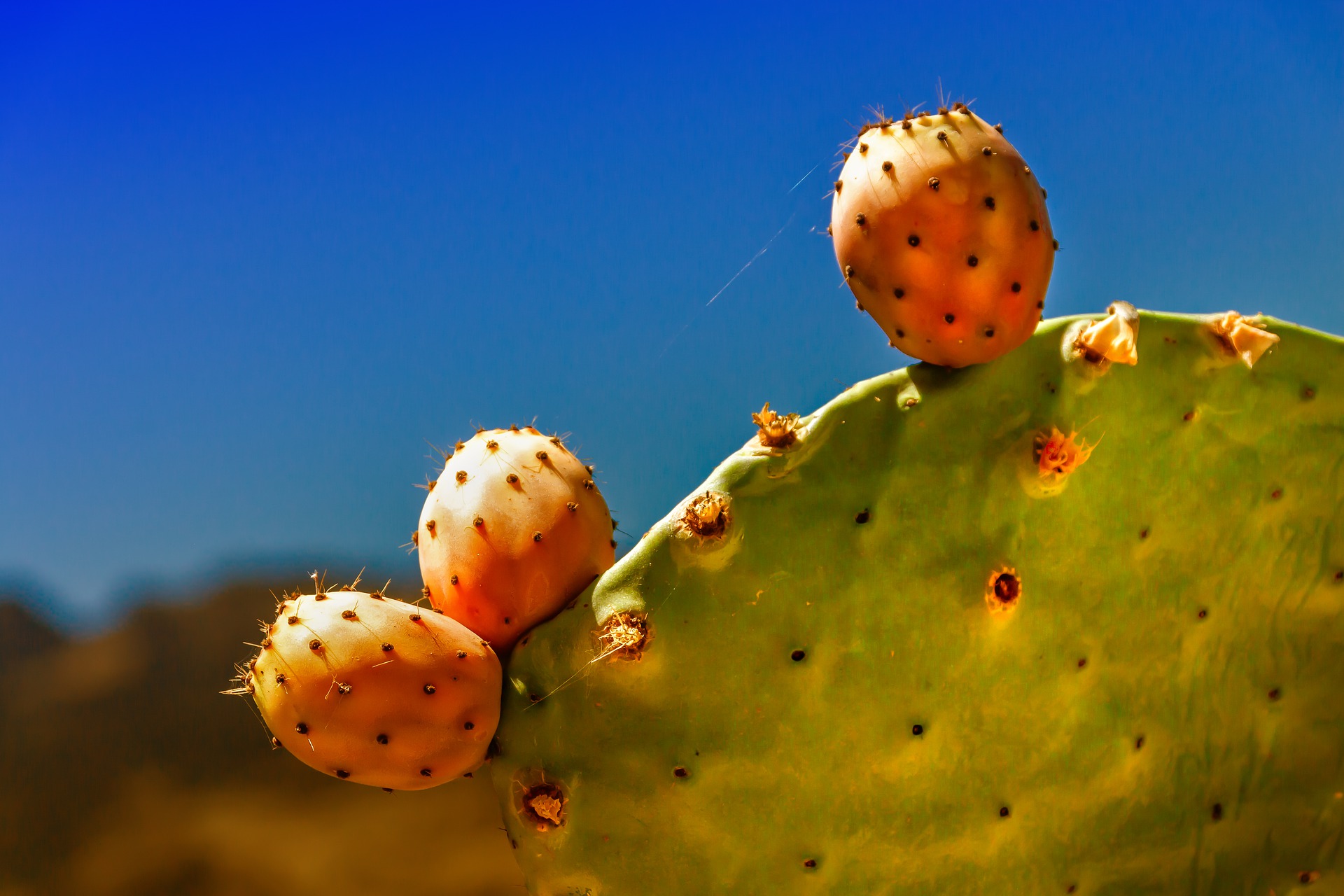
Image by analogicus from Pixabay
That’s the third category. “Edible cacti have long been a part of Mexican cuisine and the delicious young stem segments, usually called nopales, are the part most commonly used in recipes.” They list:
- Nopales. That’s a prickly pear to you and me. “Nopales are a common ingredient in Mexican cuisine; the leaves and flowers can be eaten raw, cooked, or made into delicious juices or jams.”
That’s all on the edible cacti front, folks.
Cereals and grains
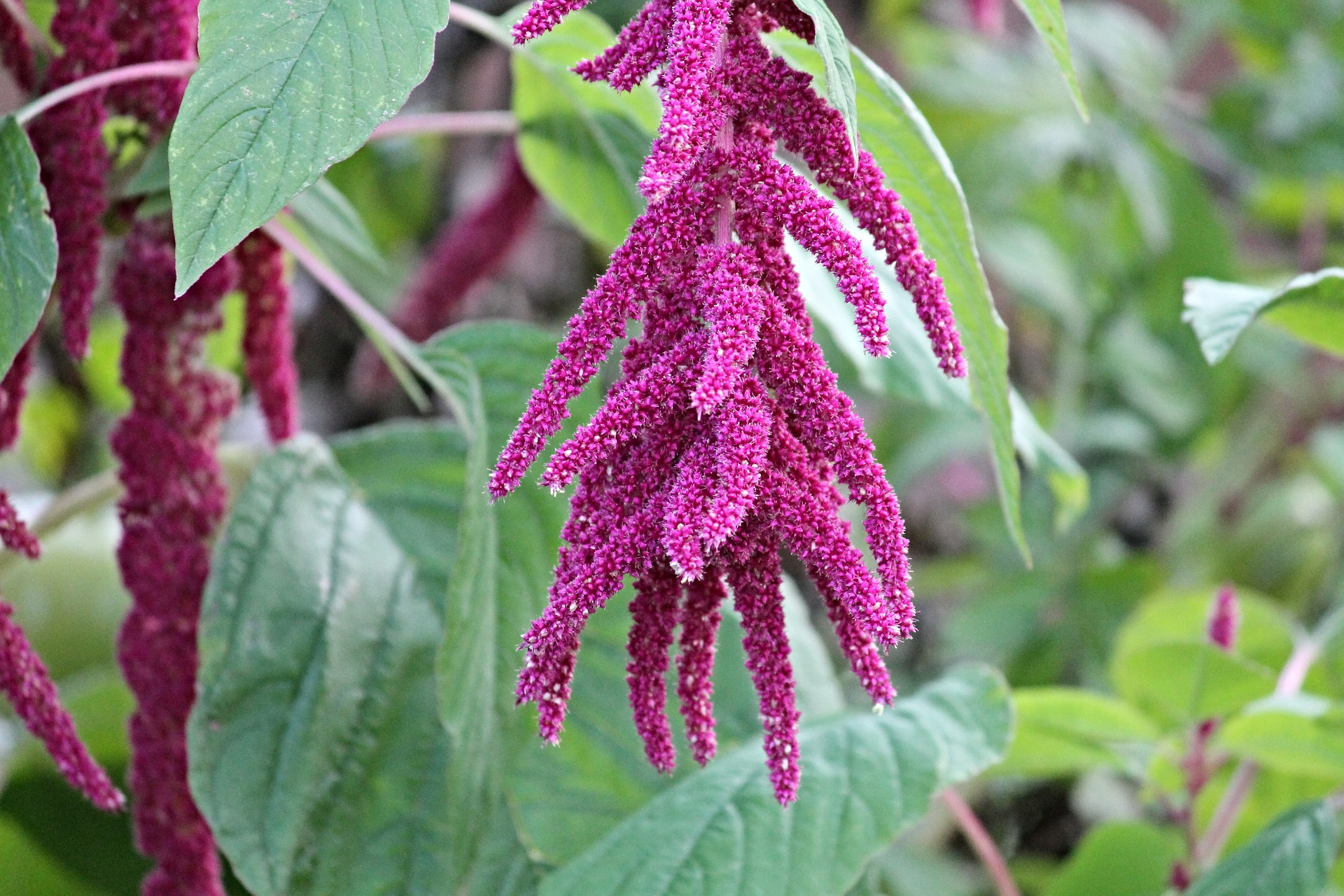
Image of amaranth by Manfred Richter from Pixabay
“For both environmental and health reasons, there is a pressing need to vary the types of cereals and grains grown and eaten.”
- Amaranth. No, not the Enya song. Grown for its seeds and leaves. “Relative to other grains, amaranth’s sandy yellow seed is high in magnesium and protein. It has a mild, slightly nutty taste and gelatinous texture making it ideal for soups, side dishes and risottos.”
- Buckwheat. “Buckwheat is one of the healthiest, nuttiest and most versatile grains… It is an ideal higher protein swap for flour in pastas and breads. It can also be a great alternative to rice, is ideal cooked in a broth or stock, and can be used in salads or stuffing. It is popular in Russia and Eastern European countries and is commonly eaten in stews, such as ‘goulash’, with potatoes, vegetables and meat.” And it’s gluten free.
- Finger millet. “Finger millet is most commonly eaten and used in the same way as other grains or cereals. It can be eaten as porridge, or milled into flour and used in bread or pancakes. It has a mild flavour that’s slightly nuttier than quinoa and has a similar texture to couscous.”
- Fonio. “Arguably Africa’s oldest cultivated cereal, fonio is a grain known for its nutty, delicate taste and versatility… Fonio can be used in salads, crackers, pastas, and even in baked goods. It can be used in place of oats to make hot cereal, in place of couscous or rice in any dish and is delicious mixed with spices and olive oil as a side dish. It also can be used to brew beer.”
- Khorasan wheat. “The amber-coloured kernels of this ancient wheat are twice the size of regular wheat and, when cooked, they have a richer, creamier and nuttier taste… The kernels are great in stews, soups, pilafs and salads.”
- Quinoa. The trendy alternative to rice. “It can replace rice in many dishes, such as pilafs, stuffings, salads and even veggie burgers, giving a nutty flavour and enhancing texture. It can also be ground and used in breads and even pastas.”
- Spelt. “An ancient form of wheat, spelt is a hybrid of emmer wheat and goat grass… The mellow, nutty flavour makes it popular to use in place of rice in pilaf, risotto and side dishes. In Germany and Austria, using spelt flour to make bread and cakes is common and often preferred over other types of wheat.”
- Teff. “Known as ‘the next super grain’ the popularity of teff as a preferred grain has grown over the past few years. This has led many farmers in Europe and North America to begin growing teff to boost supply… The mild flavour means teff flour lends itself to any number of sweet and savoury dishes. The seeds can be steamed or boiled in stock or water to be served as a side dish or to bulk up dishes.”(Can be used in making South African “paap”, says the report.)
- Wild rice. “This so-called ‘rice’ isn’t a rice at all. Wild rice is the seed of a semi-aquatic grass that grows wild in North American lakes and rivers… It can also be popped like corn for a colourful and more nutritious version of popcorn, is great mixed with other grains, added to salads, soups and mixed with other grains and vegetables to make vegetarian burgers.”
Fruit vegetables
No, not fruit and vegetables. Fruit vegetables. “Vegetable-like fruits are eaten as vegetables and commonly mistaken for them. They are sweeter and, in most cases, contain a higher amount of carbohydrate and water compared to vegetables. Examples include squash, tomatoes, eggplants/aubergines, peppers and zucchini/courgettes.”
- Pumpkin flowers. “The combination of mild pumpkin taste and soft texture make them the perfect addition to soups, sauces, salads and pasta dishes.”
- Okra. “When cooked, the seeds produce a sticky, viscous liquid, which makes them ideal for thickening soups and stews. Okra can be steamed, stir-fried or grilled and pairs well with strong, spicy flavours and seasonings.”
- Orange tomatoes. Less acidic than red. “Like all tomatoes, this small orange variety can be traced back to the tiny, perfectly round berries that grow wild in coastal Peru and the Galapagos Islands… They can be used in the same way as the more familiar red varieties: in soups, to make sauces or chutney, or added to casseroles and stews. They’re also delicious roasted to bring out even more sweetness and can be eaten on their own as a snack.”
Leafy greens
“These are arguably the most versatile and nutritious of all types of vegetables. They are grown as part of other vegetables, such as beets and pumpkins, and as the leaves themselves.”
- Beet greens. “With a subtle taste that is similar to kale, beet greens are delicious sautéed in olive oil or balsamic vinegar for a tasty side dish. Developing a soft and sweet taste when cooked, they can even be baked to make crisps.”
- Broccoli rabe. “This cruciferous green is related to turnips and mustard greens, and not, perhaps surprisingly, to its familiar namesake. With long stems, small, broccoli-like flower heads and jagged, turnip-like leaves, broccoli rabe is peppery and slightly bitter… Boil or sauté it with garlic and chilli. All parts of broccoli rabe are delicious paired with grains, nuts and other vegetables. It is often served as a side dish alongside fish and potatoes.”
- Kale. Moving on…
- Moringa. “Moringa, also called the drumstick or horseradish tree, is often referred to as ‘the miracle tree’ because of its exceptional qualities… In some countries, such as the Philippines and Indonesia, it is common to cut the long seed pods (known as ‘drumsticks’) into shorter lengths to be stewed in curries and soups. The flowers can be added to salads, fried as a snack, or used to make tea. Some popular dishes that feature moringa are South Indian sambar made with lentils, Thai kaeng som curry, and Filipino tinola and udan.”
- Pak choy/bok choi. “Pak-choi is crisp with a mild, cabbage-like flavour. Like lettuce but with more crunch… Pak-choi goes well with rich, sticky sauces to complement the mild flavour and crunchy texture.”
- Pumpkin leaves. “Pumpkin leaves taste like a cross between asparagus, broccoli and spinach and, when young, can be eaten fresh in salads. Steaming or sautéing the leaves brings out the sweetness as some varieties may have a more bitter flavour. In West Africa they are often added to soups and stews.”
- Red cabbage. “Red cabbage can be eaten raw or cooked in salads, stir-fries, in a sandwich or burger, or cooked with onions as a side dish. When cooked, the leaves will turn blue; add vinegar or acidic fruit to help maintain their red colour.”
- Spinach. “Eaten all over the world, spinach leaves can be steamed, sautéed or stir-fried and added to curries, soups, pasta dishes and stews. They can also be served on their own, as a side or fresh in salads.” But surprisingly less popular in SA than you might think…
- Watercress. Surprisingly scarce in many supermarkets. “Watercress, also known as nose twister, is related to mustard and is part of the brassica family of vegetables… Both the delicate green leaves and paler stems can be eaten either sautéed or fresh, and are great mixed in soups, salads, tarts and omelettes.”
Mushrooms
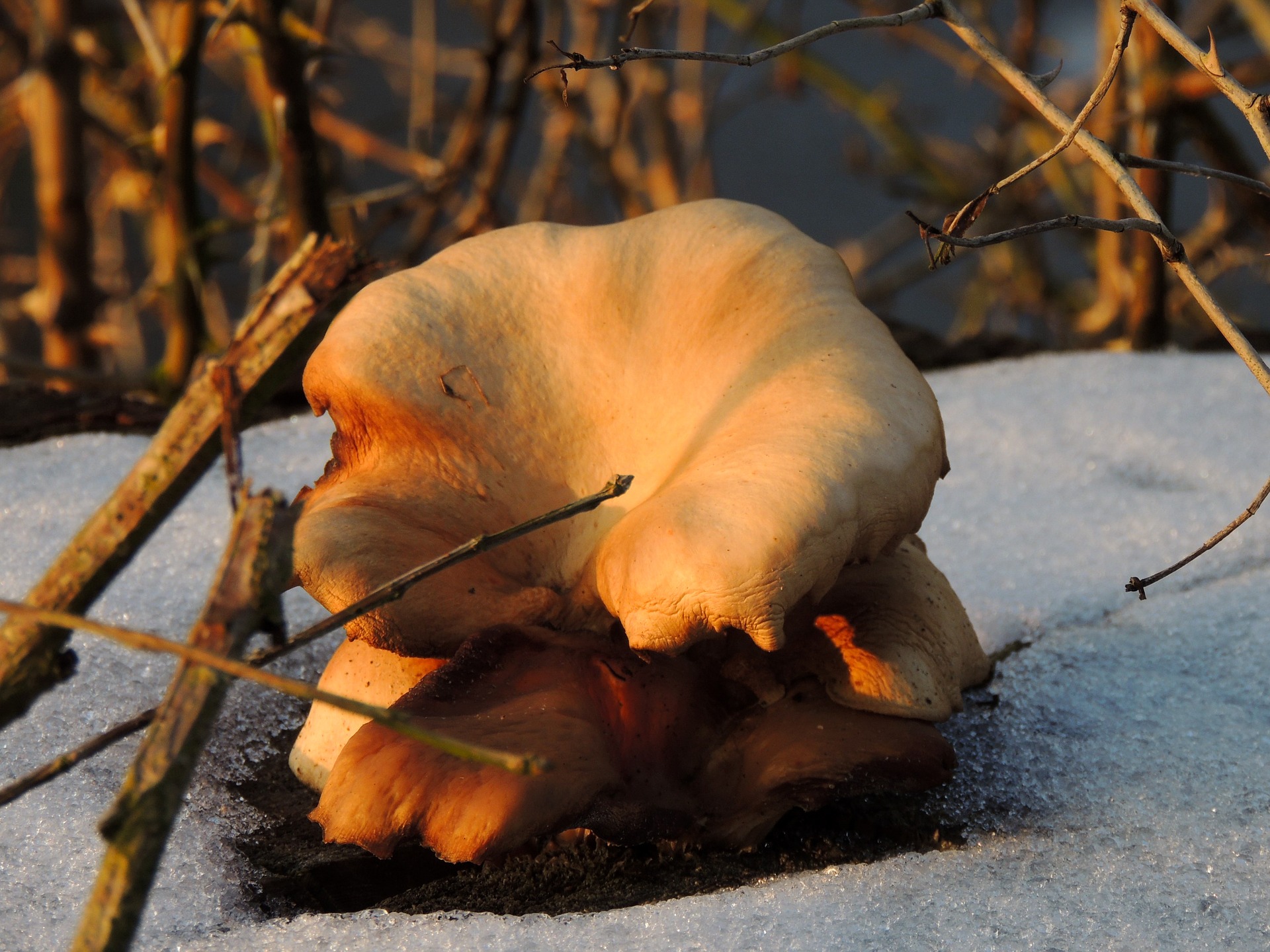
Image of saffron milk cap mushroom by VIVIANE MONCONDUIT from Pixabay
“Their texture and umami flavour make them a tasty addition and a suitable substitute for meat.”
- Enoki. “Known as winter mushrooms or golden needles, these long, thin, delicate mushrooms grow all year round in wild clusters… To keep their texture and enhance their lovely umami flavour, they need to be cooked quickly, either flash fried, briefly pan roasted or bathed in the residual heat of stews or stir-fries.”
- Maitake. “This hefty, layered fungi can grow to more than 45 kilograms (99 pounds) giving them the title ‘the king of mushrooms’… they have a strong, earthy taste and can significantly enrich the flavours of other foods in various types of dishes. They are delicious cooked with olive oil, or as a featured ingredient in omelettes, hot pots, stir-fries, stews and sauces.”
- Saffron milk cap. “Milk caps grow in pine forests in Europe and North America and are picked between August and October… They can be fried in olive oil with garlic, parsley, cream or red wine. They can also be marinated, salted or pickled, or added to stews and soups. They feature in risottos and pasta dishes served in various restaurants across Europe and North America.”
Nuts and seeds
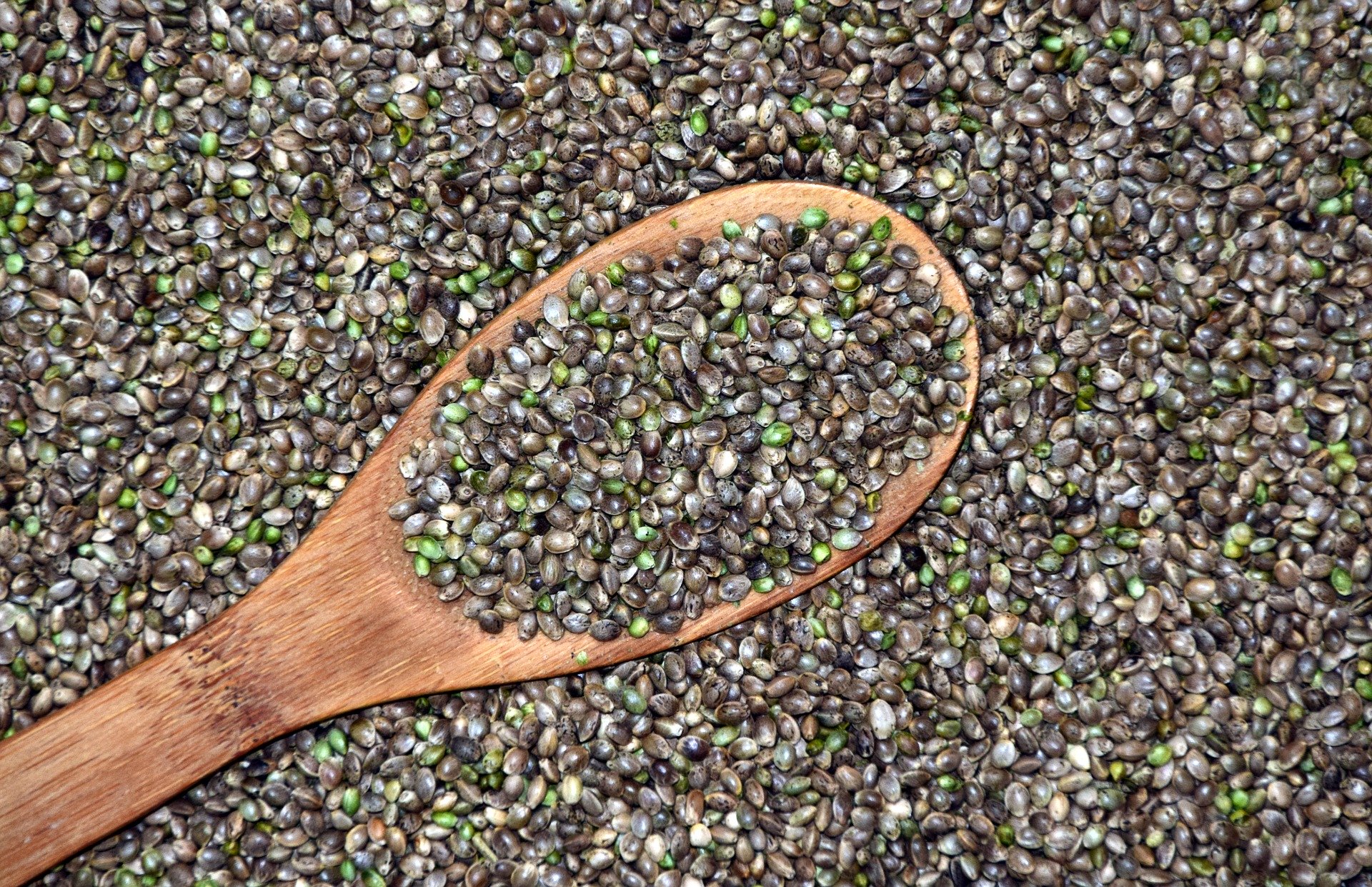
Image of hemp seeds by Ulrike Leone from Pixabay
“Used in cuisines around the world, these small embryonic plants can stand alone as snacks or add flavour and a satisfying crunch to salads, soups and desserts.”
- Flax. “Also known as linseeds, they have been widely cultivated since the early days of civilisation and can be used in place of half the flour in any baked good, including breads and muffins. Although they are commonly eaten on salads and cereals, they are now in high demand as an ingredient in vegetarian burger mixes and other plant-based dishes. Flaxseed oil can be used for dressings, dips and sauces.”
- Hemp. “The small, crunchy seeds have a soft, buttery texture… Hemp seeds are available in various forms: as oil, a milk substitute, flour and in many products (including dips, sauces, soups, crackers, biscuits, breads and salads). They can be eaten raw, made into hemp meal, sprouted or made into powder.”
- Sesame. “According to Assyrian legend, when the gods met to create the world, they drank wine made from sesame seeds… They can be eaten raw, toasted and as a paste called tahini. They add crunch and a nice nutty flavour to sushi, salads, soups, noodle and rice dishes. They’re commonly found in crackers and baked goods, such as the Middle Eastern dessert halva. They also make a wonderfully fragrant oil that is great in stir-fries, drizzled over savoury dishes and in dressings.”
- Walnuts. “Possibly the oldest tree food known to humans, records report walnut consumption dating back 10,000 years… they are more commonly eaten dried, either raw or cooked in both sweet and savoury dishes such as cakes, muesli, stews, sauces and dressings. Dry-frying or roasting turns them a lovely gold and really brings out their flavour.”
Root vegetables
“Root vegetables are the crisp and colourful underground parts of plants that are eaten as vegetables.”
- Black salsify. “Not widely known, this parsnip-like root vegetable is part of the sunflower family50. It is also known as the ‘oyster plant’ because of its sweet, slightly musky taste… It can be boiled, mashed or baked, and served in place of a potato. Similar to carrots and parsnips, black salsify is ideal roasted, and goes well with soups and stews.”
- Parsley root. “Known also as Dutch parsley, this taproot vegetable has an aromatic taste somewhere between celeriac, carrot and, inevitably, parsley… It’s great fried as fritters or chips, or grated raw into salads and slaws.”
- White icicle radish. “White icicle radishes look like carrots and grow four to six inches long, although their thin skin is cream coloured and their flesh is white. They have a milder, more peppery taste than their diminutive and more common red cousins. Tasty grilled, braised or roasted, they are also enjoyed grated or sliced fresh into salads, stir fries, curries and soups to add crunch. In some countries, such as France, they are boiled, coated in oil or butter, lightly spiced and eaten as a side dish. They can also be eaten raw as a snack.”
Sprouts
“The sprouting process doubles, and in some cases triples, the nutritional value of the plant… Sprouts are delicious as a side dish topped with a light dressing or in soups, salads and sandwiches to add a nice crunchy texture.”
- Alfalfa sprouts. Not necessarily with a nice chianti. “ Their crunch and mild flavour make them a great addition to sandwiches and soups. They can also be eaten on their own, topped with a light dressing.”
- Sprouted kidney beans. “They make a great substitute for ground meat because of their texture and protein content. The mild flavour makes them the perfect carrier of seasonings and diverse flavours.”
- Sprouted chickpeas. “To sprout chickpeas, soak for eight hours, drain and rinse. Transfer to a glass jar or bowl and cover with a cheesecloth. Repeat the rinse and drain steps a few times until the sprouts are to the desired length. This usually takes three to four days. Like all sprouts, sprouted chickpeas are prone to bacterial growth, so it’s important to follow good safety principles… Add them to stews, soups, stir-fries, or simply enjoy as a side dish. Hummus made from sprouted chickpeas has more crunch and a nuttier flavour than unsprouted chickpeas.”
Tubers
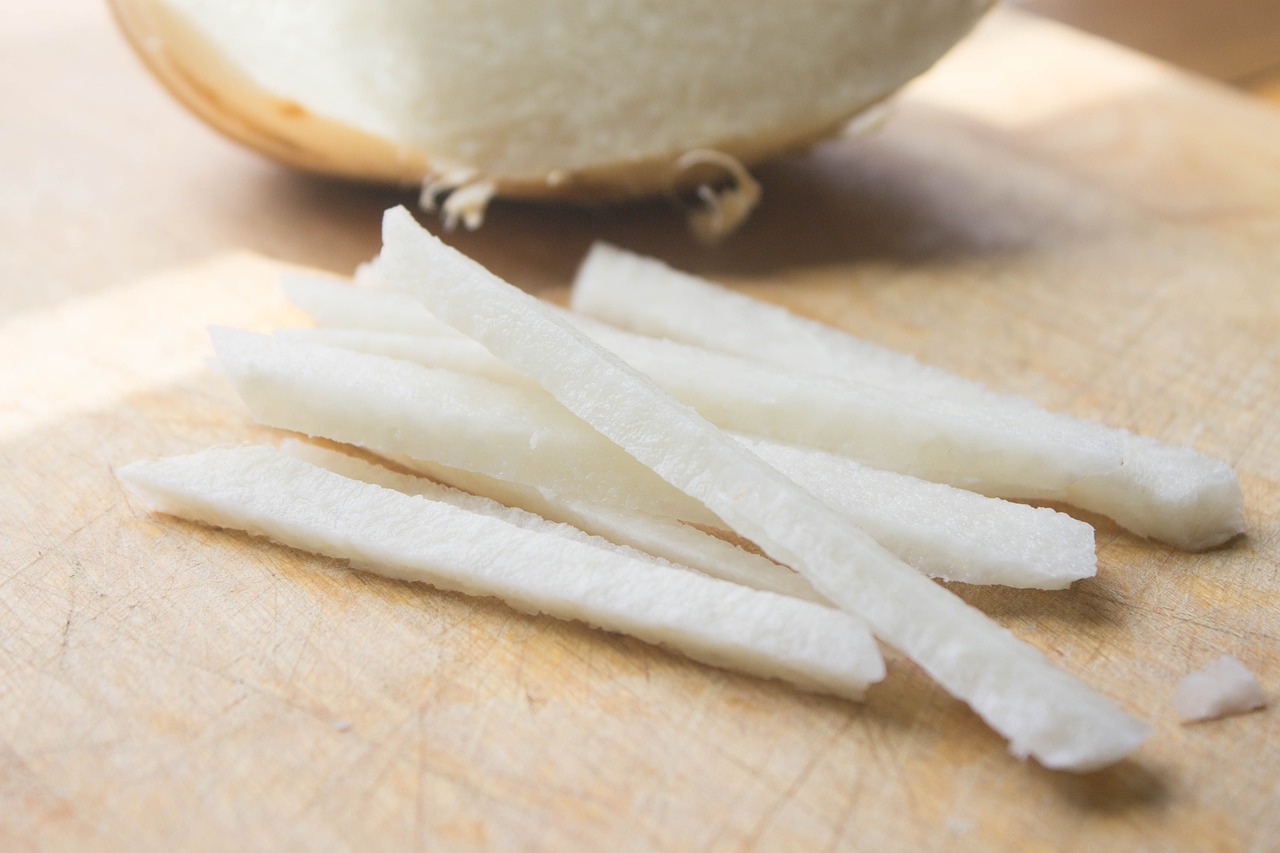
Image of yam bean root (jicama) by Laury Raiken from Pixabay
“Growing and eating the less common types of tubers makes our food system more resilient while, in most circumstances, providing more nutrients.”
- Lotus root. “A great addition to most dishes where vegetables can be added, they’re commonly used in Asian stir-fries, but can also be deep-fried, braised or pickled.”
- Ube (purple yam). “Ube, a purple yam native to the Philippines, has been increasing in popularity around the world… In the Philippines ube is often eaten boiled, baked, or as a sweetened pudding called ube halayá. Ube can be prepared in the same way as potatoes. It is sold fresh, cut into cubes, in syrup, puréed or powdered.”
- Yam bean root. “There are many benefits to the yam bean root, also known as jicama… With a starchy, slightly sweet flavour, it is typically eaten fresh and sliced to add crunch to salads or as a snack. It can be used in place of, or in addition to, other vegetables in stir-fries and is a lower calorie, more nutritious alternative to potato fries or chips. Note that only the tuber part of the yam bean root should be eaten.”
- Red Indonesian sweet potatoes. Aka cilembu. “When baked, Cilembu sweet potatoes have a very distinctive aroma and sweet taste with a sugary, honey-like glaze…” DM

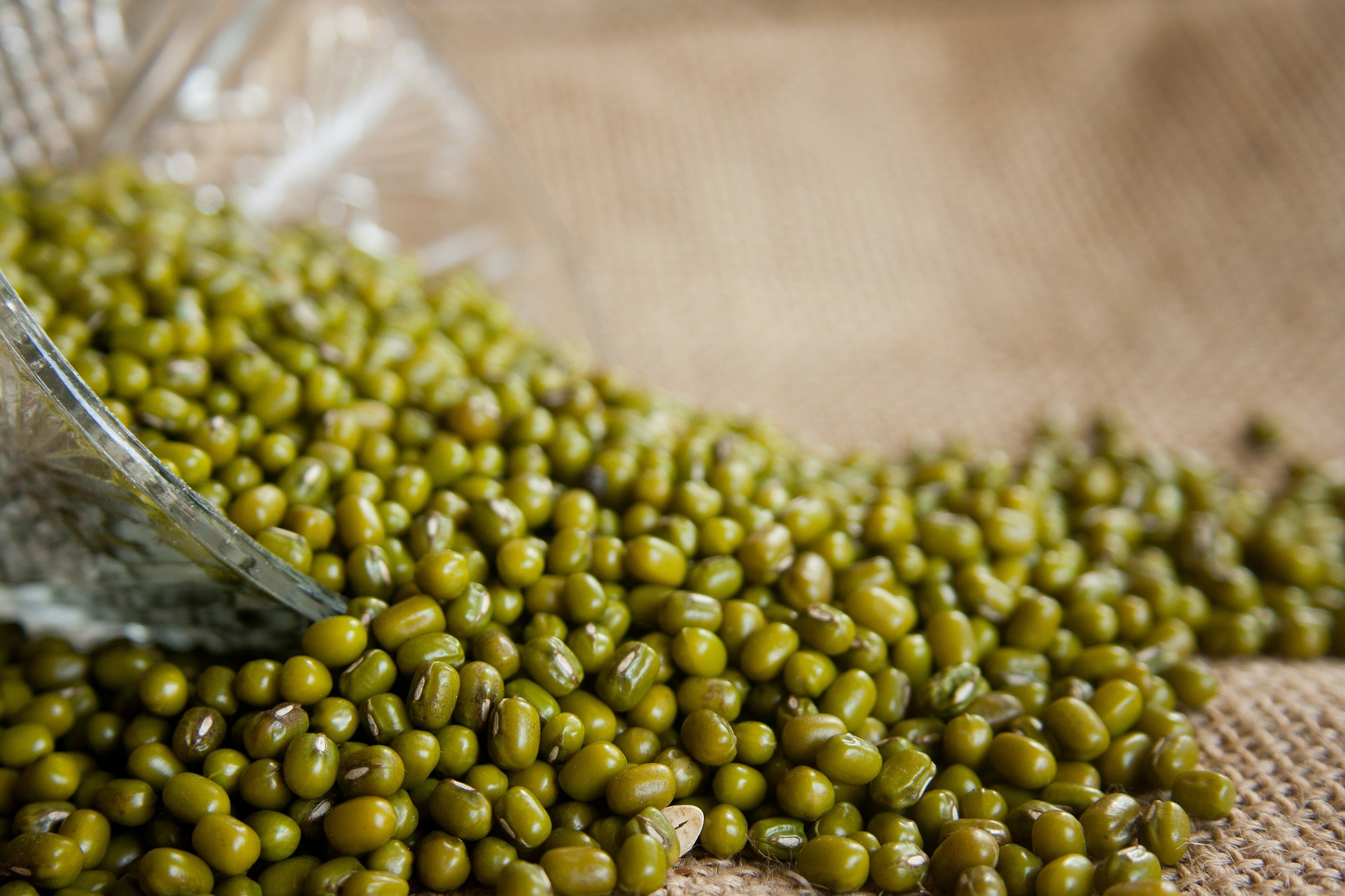
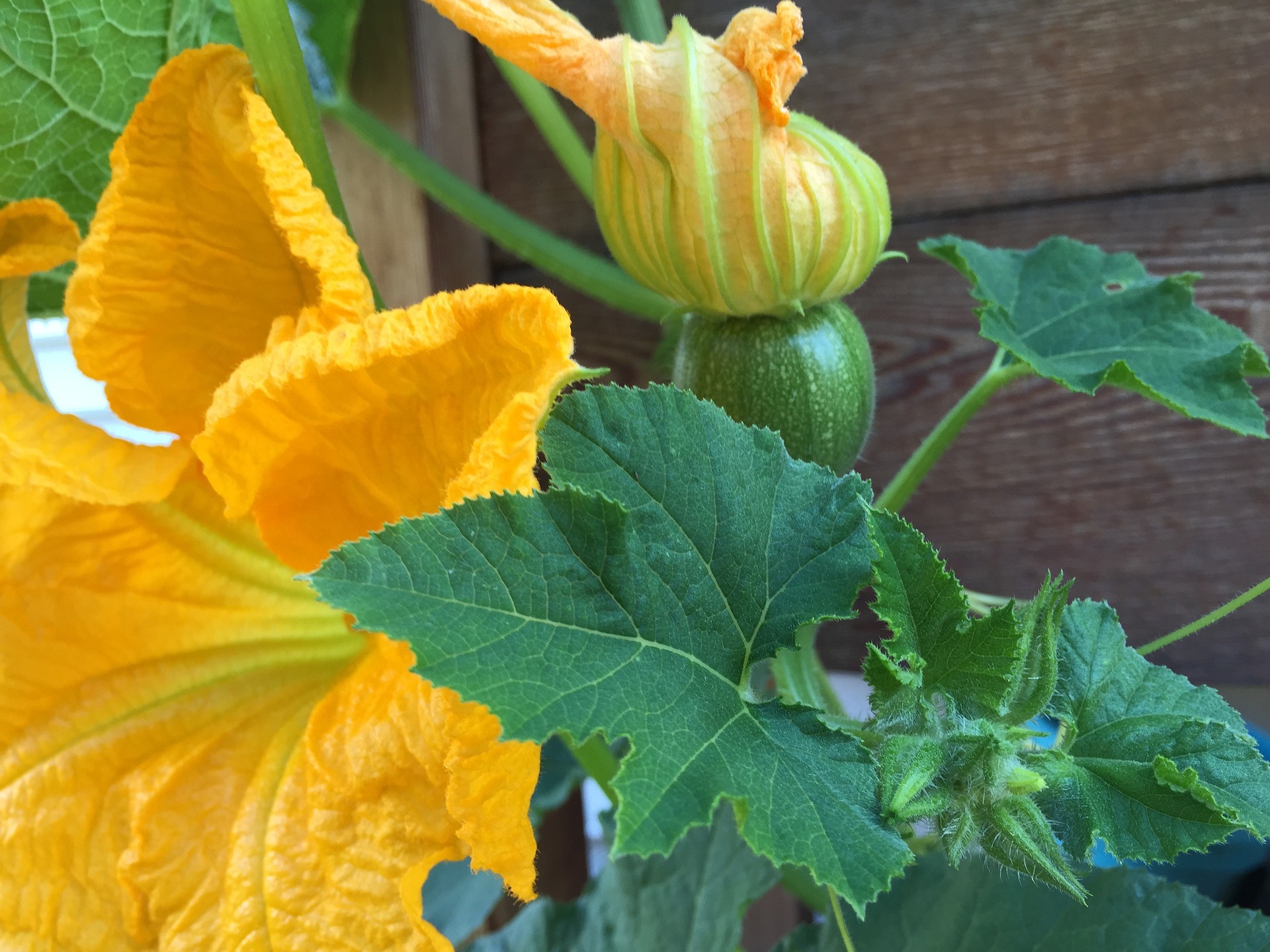
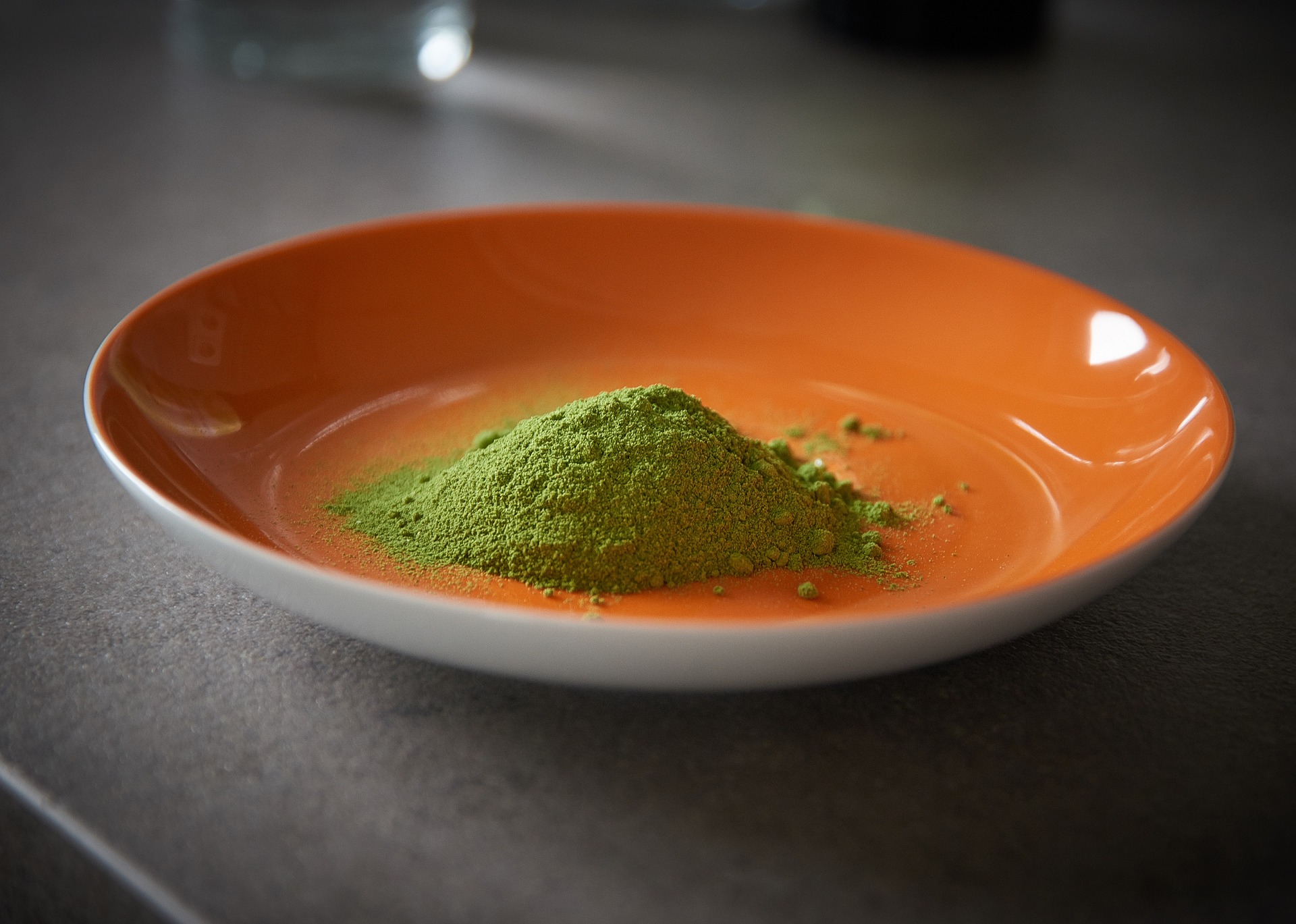
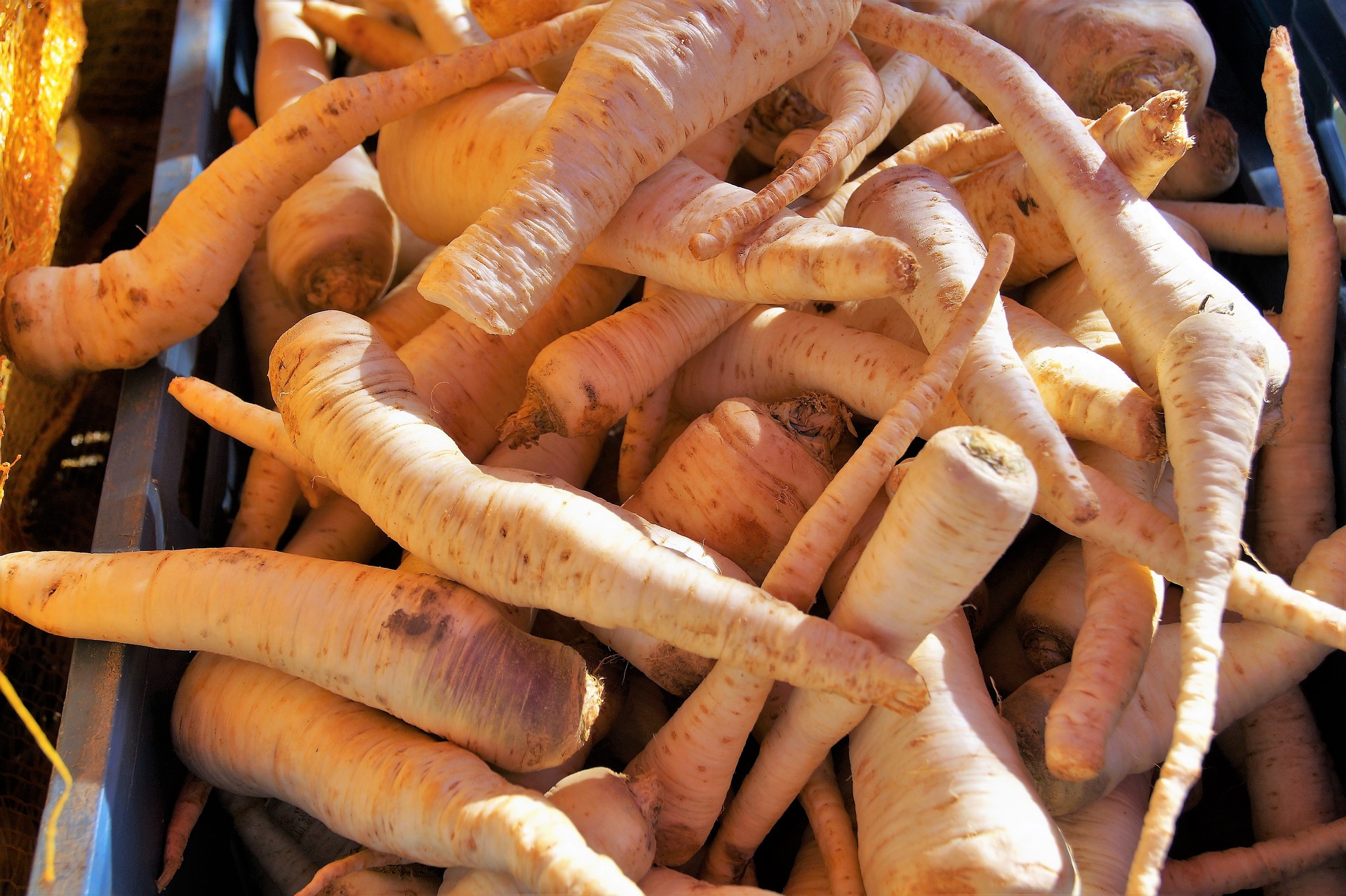
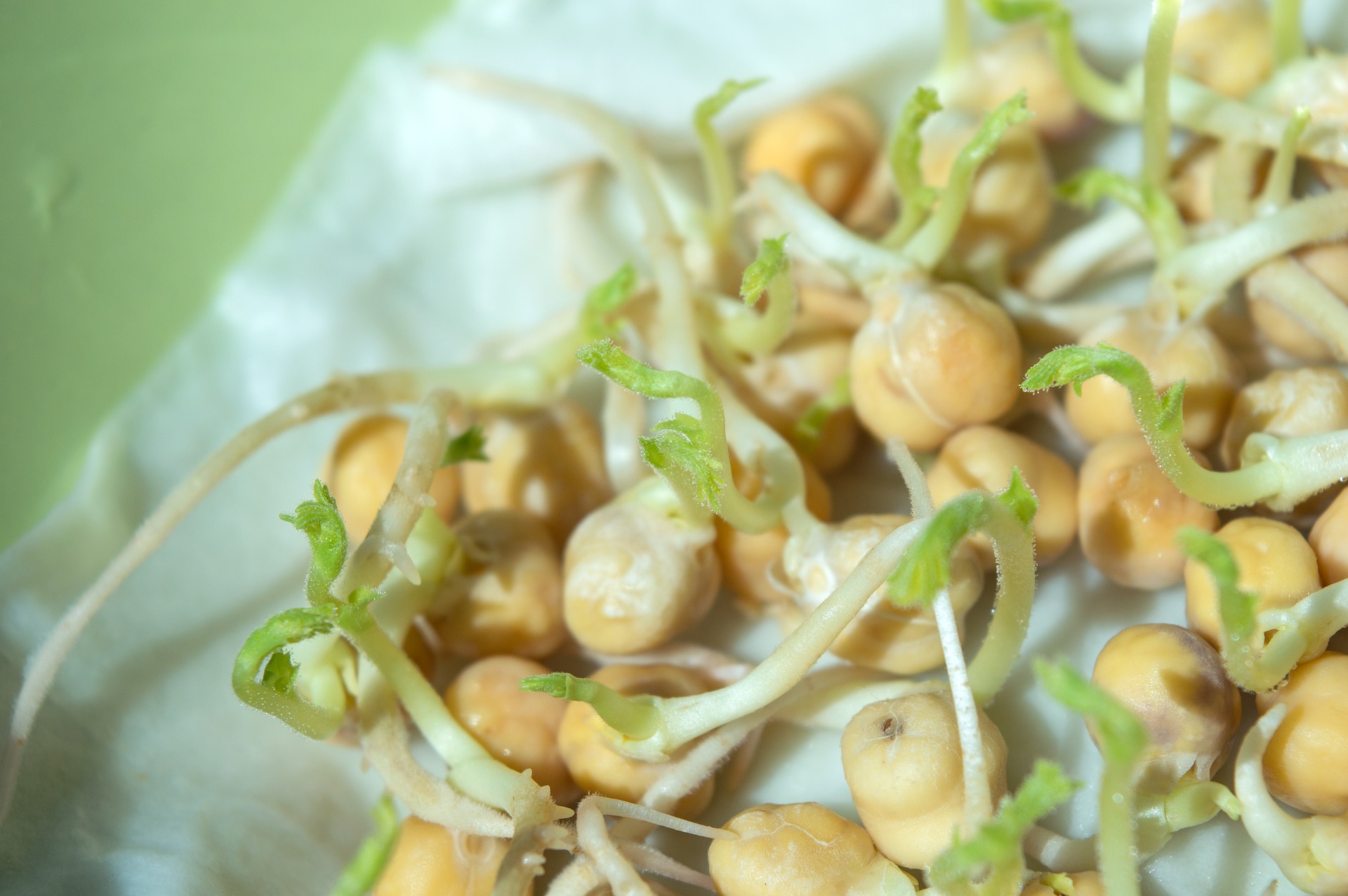


 Become an Insider
Become an Insider